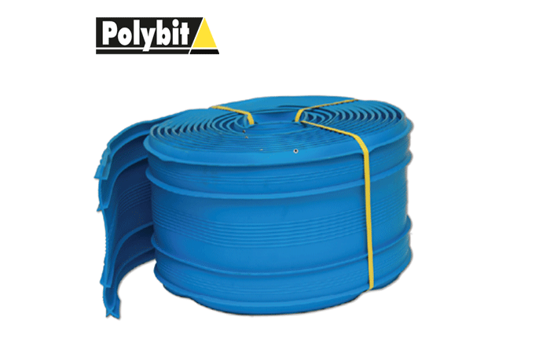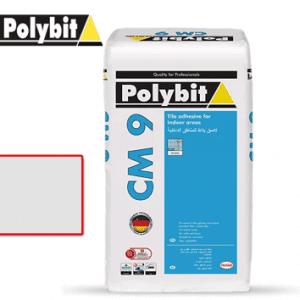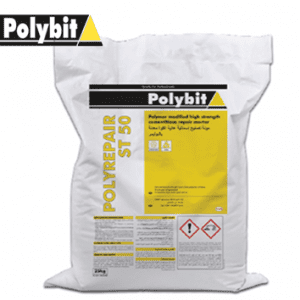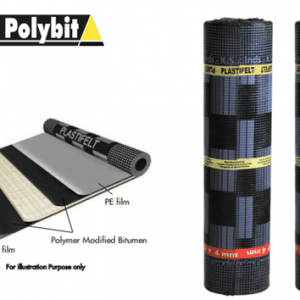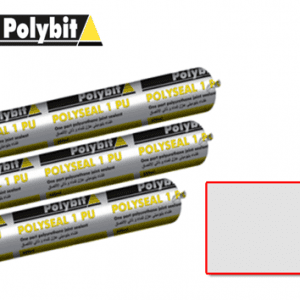POLYSTOP CJ3 – 250MM X 10M X 3MM
Characteristics
- Good tensile strength & elongation
- Brass eyelets on edge flanges for tying with steel reinforcements
- Non toxic. Suitable for use in contact withpotable water
- Good chemical resistance
- Non-staining. Will not discolor concrete or produce electrolytic action
DESCRIPTION : Polystop CJ is Poly Vinyl Chloride (PVC) resin extrusions waterstop that are plasticized and stabilized to offer good performance in concrete structures against water leakages. Polystop CJ is manufactured to meet the most stringent performance specifications and are resistant to abrasion and chemicals.
Fields of application: Polystop cj waterstops are used in RCC structures like:
- Storage tanks
- Retaining walls, basements, foundations
- Subways, tunnels & culverts
- Drainage, sewerage & waste water structures
- Treatment plants
- Swimming pools
- Dams, canals
Internal profile details : Polystop ICJ – Internal Construction Joints The internal Construction joint waterstops is placed in the centre of the concrete construction joints. Since this type of waterstop is embedded into the concrete they are designed and incorporated with fins and multiple solid-core ribs along the two lengthwise edges. These fins interlocks the waterstop in the concrete thus providing a superior mechanical bond with the concrete. The ribs are designed with particular angle which anchors with the concrete and further reinforces the mechanical bond. In addition to that angle in the ribs ensures a torturous path for the passage of water.
Application instructions : Internal and centrally placed waterstops are positioned within the concrete where the centerline of the waterstop is aligned with the centre of the joint. Such waterstops functions as a watertight diaphragm wall against any water leakage. For a proper placement of the waterstop, split formwork is recommended when installing in slab-toslab, slab-to-wall and wall-to-wall joints. The waterstop is then tied with wires trough the eyelets provided at the end flanges to the reinforcement. This will ensure that the waterstop firmly held in position and is not misaligned or fold during the concrete pour. One half of the waterstop has to be positioned within the first pour and the other half projecting into the second pour. A tight fit between the waterstop and the form is also necessary to prevent excessive leakage of concrete paste, which could lead to honeycombing of the concrete. A fully continuous water stop network must be formed throughout. At bends and additional joints, factory welded junctions are to be used when jointing with the placed water stops. Field buttsplices shall be heat fused welded using a teflon coated thermostatically controlled welding iron (240V).The edge of the water stop shall be cut with a knife to get an even and sharp finish and aligned in a specially designed fixing jig. The edges will then be positioned in the jig in such a fashion that at least 25mm of water stop protrudes from the jig. Place the welding knife in between the two ends, and when the PVC starts melting (>140°C), beads will start forming around the section. Remove the welding knife and press both the ends firmly against each other to form a neat buttsplice. Press the joints against each other for sometime till the PVC cools and forms a strong fusion welded joint.
Precautions
- Concrete in and around the waterstop has to be properly compacted in order to ensure a full contact of the waterstop and a water tight seal.
- Surface of the waterstop shall be cleaned of all dirt and cement laitance which can affect the water tight seal with the concrete.
- The clearance between the waterstop and the reinforcement should be at least twice that of the maximum size of the aggregate. This will prevent the formation of voids and honeycomb around the waterstop.
- The waterstop should not be punctured to allow a reinforcement to pass through the waterstop.
- Installed waterstops should be protected from UV. Prolonged exposure will make the waterstop brittle.
Storage : Store the material in a cool and shaded area. Protect from UV and high temperatures. Prolonged exposure to sunlight and harsh environment will result in deterioration of the product. Keep away from sharp edges to prevent damage.
Health & safety : Polystop CJ is completely non-hazardous and nonflammable. But care should be taken while cutting and welding the joints. Hydrogen Chloride vapors will be released during the hot welding, therefore the working area should be properly ventilated.

